Current reality
Hyperprolificacy has brought us many advantages on our farms, but it has undoubtedly also brought us great challenges:
- More piglets mean lower individual piglet weights
- Lower individual weights mean a greater risk of mortality
- More piglets means more demands on the sow.
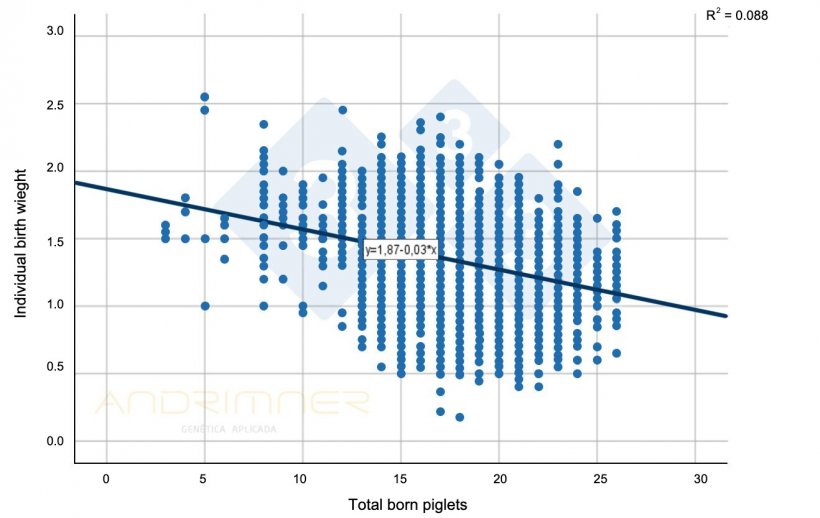
Graph 1. Regression curve of total born and individual birth weight. Source: Javier Lorente. Commercial farm, 3483 piglets weighed individually 2021.


Graph 2. Birth weights by prolificacy. Source: ThinkinPig 2015

Graph 3. Mortality rate according to birth weight. Source: Javier Lorente. Commercial farm, 3483 piglets weighed individually 2021.
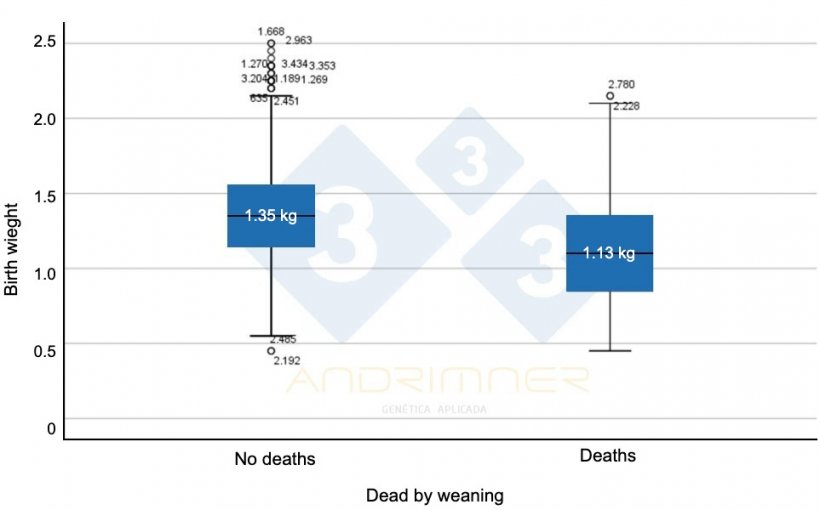
Graph 4. Average birth weight of surviving piglets (“no deaths”) and average birth weight of deaths. Highly significant differences between the two groups ( F=155.713; p<0.001) Source: Javier Lorente. Commercial farm, 3483 piglets weighed individually 2021.
In a previous article we talked about the need for the piglet to get proper colostrum and worked on how to do this through split suckling.
Before starting cross fostering procedures, it is important to assess the viability of the piglets and decide if all piglets born are viable. As we have seen in the studies presented above, a very high percentage of piglets born with low birth weights will have a very low survival rate, so in each case we will have to assess the viability of these piglets before doing a cross fostering that may compromise the health of the piglets that are more viable. If we decide that there are piglets that are not going to survive, we will have to euthanize them to prevent them from suffering since there is a high possibility the piglets will die of cold, starve due to the lack of colostrum, or be crushed as a result of its weakness. Of course, proper euthanasia procedures will be followed, complying with animal welfare regulations.
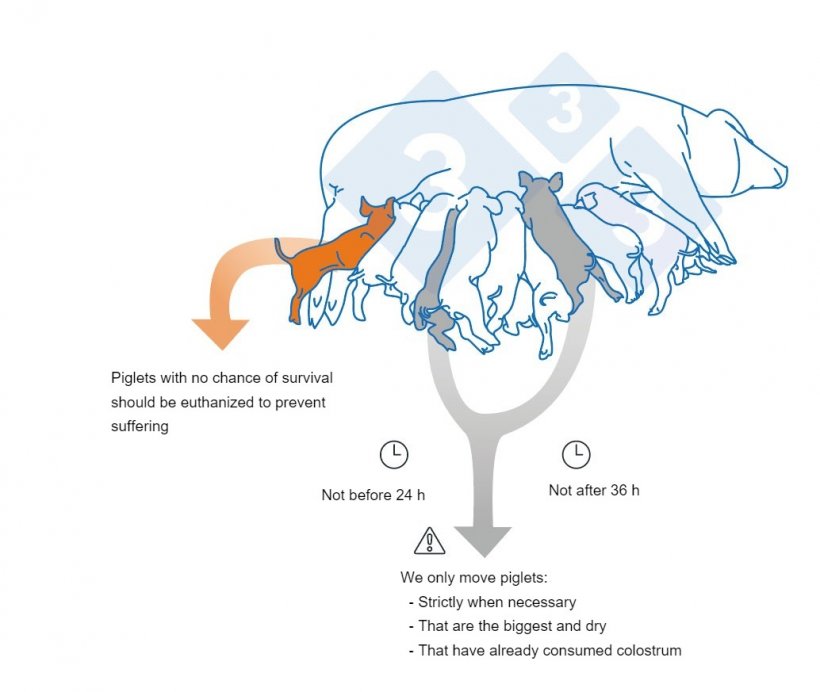
Key points to take into account when cross fostering piglets.
In another study conducted by ThinkinPig, it was shown that every time we move a piglet it can imply a loss of 300 g of weight at weaning, so again, and as a first rule, we should avoid any movements that are not strictly necessary.
When do we need to do cross fostering? Normally only when we match litters by piglet size or number and complete litters with piglets from other sows. The fundamental rules will be the same as we will discuss now in the case of nurse sows.
And when do we need to use nurse sows?
- When we have surplus piglets
- When we have piglets that are falling behind
We will focus on the first case since in the second case there are many variables that should be discussed first:
- Will I compromise the health of my farm if I move fall-behind piglets?
- Is it really worth moving them or are they piglets that will cost me more in terms of production and make things more complicated?
The reality is that we should not move piglets more than 36 hours after the sow farrows, so we are only going to talk about matching litters and using nurse sows for surplus piglets at farrowing.
The second rule is that to ensure that piglets intake colostrum, we should not move piglets before 24 hours. But what happens if we work on a farm with intensive morning hours working schedule and when we arrive at the farm we have a sow farrowing, which at mid-morning has finishised farrowing a litter of 20 piglets, should not we do any movements until the next day? Wouldn't this be too many hours, many of them unsupervised, with too many piglets? The answer to this question is yes, it is too many hours. What do we do in these cases?
- Upon arrival at the farm, we start with the split suckling of the piglets that have already been born and we mark them.
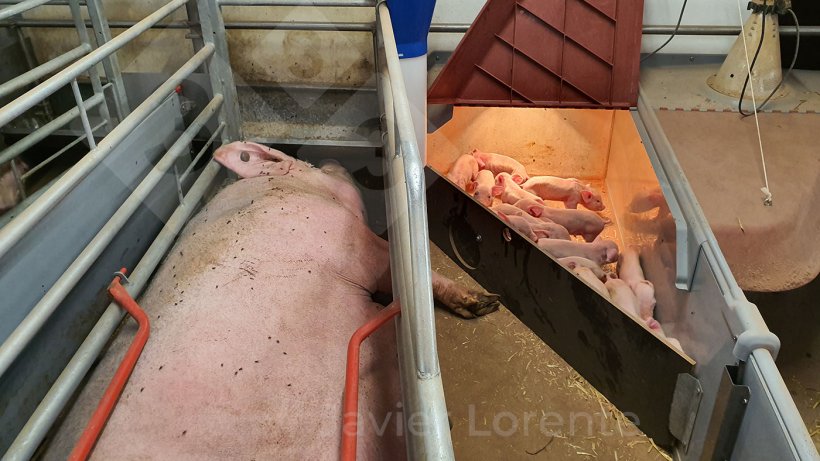
Piglets enclosed in the nest to begin split suckling.
- At the end of the morning, before leaving the farm, we check the piglets. All those that have their umbilical cord already completely dry we consider fit to be moved according to the protocol we have.
- In this case, we will always move the piglets that are the biggest and are fully dry as long as the health of the farm allows it. If the farm has any significant pathology, the veterinarian must decide whether it is advisable to move piglets or not, and may even limit cross fostering, due to the risk involved, despite having sows with a large number of piglets.
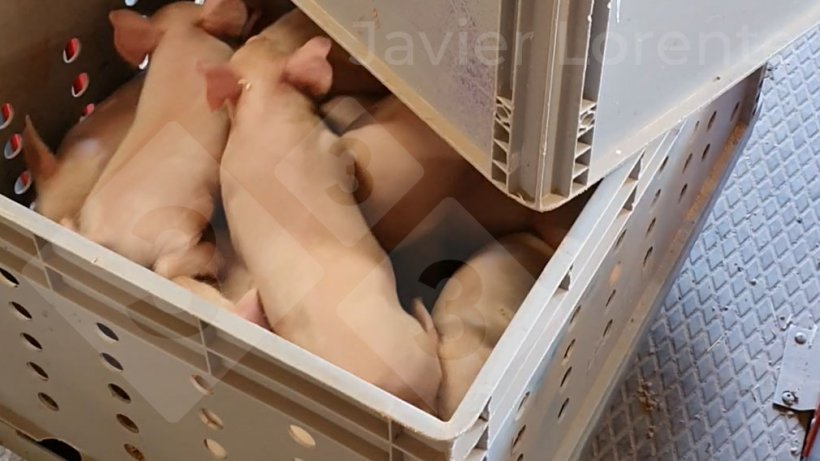
Large, dry piglets separated out to be moved.
Video 1. With the help of a thermal imaging camera, we can see that one of the coldest piglets still has a wet umbilical cord.
This last point could be considered a third rule that says whenever we move piglets and remove them from their dam, we have to try to move the big piglets as they will be better able to adapt to their new dam and their new "siblings" than the small or low-viability piglets.
In certain cases, if it is necessary to move small piglets, we should find them a dam that has adequately sized teats and that has a higher milk production, which would allow the piglets to develop correctly throughout the lactation period.
So far we have discussed the basic rules for deciding if and when to do cross fostering and use nurse sows.
Once the decision to make these movements has been made, the question is: How do I do it? In the following article, we will talk about the different systems we have, the keys to carry them out, and the cost that each one can imply according to our experience.




